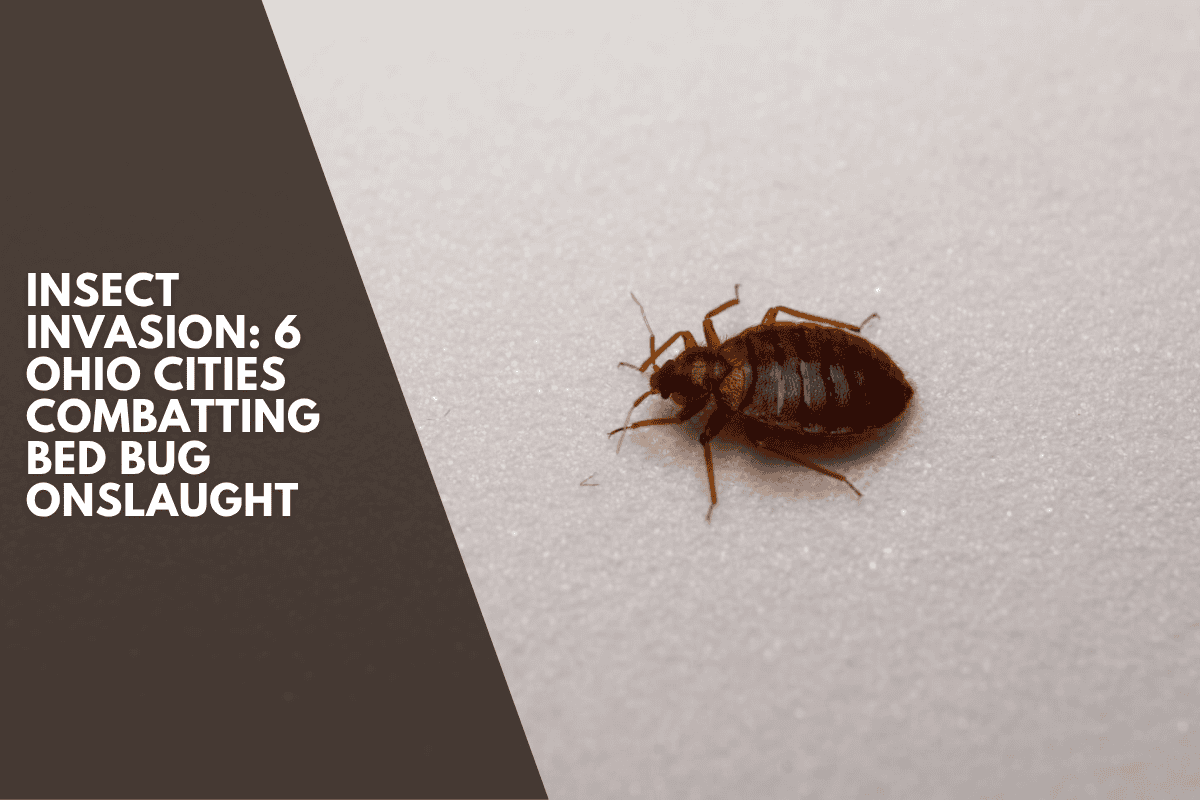Ohio is facing a major bed bug resurgence in 2025, with six key cities—Cleveland-Akron, Columbus, Dayton, Cincinnati, Toledo, and Lakewood—experiencing high levels of infestations.
As one of the states with the worst bed bug problems in the nation, Ohio is seeing a rise in these persistent pests, driven by factors like increased travel, urban housing density, and insecticide resistance. Here’s a look at how the state and its cities are responding to this growing problem.
The Six Ohio Cities Combatting Bed Bug Onslaught
| City | National Infestation Rank (2025) | Notable Factors & Response |
|---|---|---|
| Cleveland-Akron | 3rd | Highest in Ohio; dense housing, high mobility |
| Columbus | 12th | Large rental market, active travel, city programs |
| Dayton | 11th | Widespread cases, both homes and apartments |
| Cincinnati | 14th | Older housing, major travel hub |
| Toledo | 40th | Steady complaints, ongoing treatments |
| Lakewood | Not ranked nationally, but active | Local ordinances, owner/tenant cooperation |
Why Are Bed Bugs Surging in Ohio?
1. Increased Travel
The post-pandemic rise in travel and social gatherings has created more opportunities for bed bugs to hitch a ride into homes, hotels, and apartments. Travelers unknowingly bring these pests back with them, spreading them across the state.
2. Urban Density & Aging Housing
Ohio’s crowded cities and aging housing infrastructure provide the perfect environment for bed bugs to thrive. Older buildings, especially in densely populated areas, have many hiding spots, making it difficult to fully eradicate the pests.
3. Insecticide Resistance
Bed bugs are increasingly resistant to common insecticides, making it harder to control infestations. As a result, professional pest control interventions are becoming necessary to handle the problem effectively.
How Are Cities Responding?
Public Health Initiatives
To combat the bed bug surge, cities like Columbus and Cleveland have expanded their inspection programs and launched public education campaigns. These initiatives inform residents about prevention and treatment and provide resources for landlords and tenants. Local health departments also offer inspection services and legal guidance to help people deal with infestations.
Ordinances & Enforcement
Lakewood has implemented clear ordinances that define the responsibilities of property owners and tenants, mandating prompt reporting and professional extermination when bed bugs are found. In Columbus, code enforcement can require property owners to treat infestations in multi-unit buildings, with noncompliance potentially leading to court action.
Prevention & Best Practices
Preventing bed bugs is a community-wide effort. Residents are advised to:
Inspect hotel rooms and secondhand furniture for signs of bed bugs before bringing them home.
Avoid placing luggage on beds or floors during travel to reduce the risk of transporting bed bugs.
Use high-heat drying (≥130°F for 30 minutes) on clothing and bedding after traveling to kill any bugs that may have hitchhiked.
Declutter living spaces and seal cracks in walls to reduce hiding spots.
Vacuum using HEPA filters and encase mattresses to prevent infestations.
Ohio is facing an ongoing battle with bed bugs, especially in Cleveland-Akron, Columbus, Dayton, Cincinnati, Toledo, and Lakewood. These cities are leading the charge with enhanced public health programs, local ordinances, and education to help residents and property owners manage the issue. Early detection, professional pest control, and vigilant prevention practices are key to fighting this growing problem.
Sources
[1] https://spectrumnews1.com/oh/columbus/news/2025/06/11/ohio-cities-rank-high-for-teminix-top-50-bed-bug-infested-cities-list
[2] https://thewrangler.com/insect-invasion-5-ohio-cities-combatting-bed-bug-onslaught/2025/06/21/
[3] https://ohioline.osu.edu/factsheet/ent-0103
[4] https://www.ohhn.org/bed-bugs-finding-assistance/
[5] https://www.co.highland.oh.us/docs/Bedbug%20brochure%20Fair%20Housing.pdf











